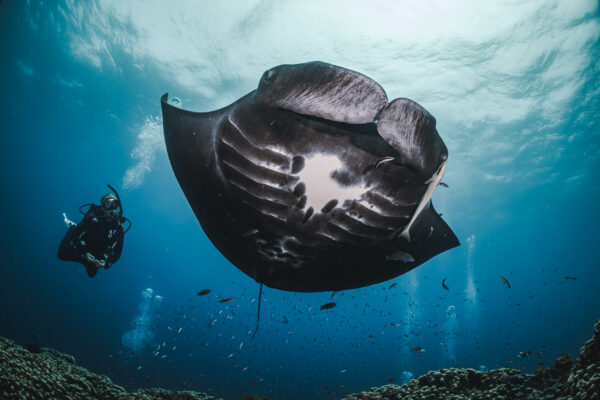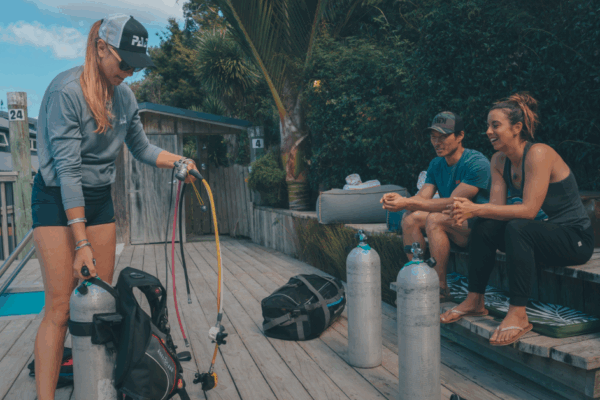When diving from boats or in areas with boat traffic, simple precautions can go a long way toward reducing risk.
The U.S. Coast Guard Boating Safety Resource Center reports that from 2005 to 2013, boat-propeller strikes caused 636 injuries and 38 deaths of people engaged in water activities (boating, water skiing, swimming, snorkeling, diving, tubing, etc.). Most commonly people were struck by the vessel as evident in 442 injuries and 29 deaths.
Incidents in which boats hit divers, show that divers are at risk before, during and after a dive. A common assumption is that boat incidents are more likely to happen at the end of the dive when divers ascend to the surface, but they also occur on the surface before the dive or during the dive when divers unintentionally get close to the surface.
Surface marker buoys (SMBs and DSMBs) and dive flags on floats have been around a long time and are effective ways of reducing the risk of boat incidents, yet some divers still do not use them, even when required by local regulations. Incidents in which boats hit a diver can have tragic consequences and are devastating for everyone involved.
As a PADI® Pro and role model, you should make divers aware of the need to let boaters know they are in the water. Stress the importance of deploying a DSMB at the end of the dive during the safety stop to mark their location. Emphasize the need to stay close to a descent line especially if a diver has difficulty descending, due to ear problems or buoyancy issues. Recommend towing a small float in areas with heavy boat traffic. It’s also important to mark the location of snorkelers so they are easily seen both by other boats and by the dive operation’s surface staff.
It’s in all of our best interests to reduce the risk of boating incidents. Consider the whole picture and look for ways to reduce this risk by ensuring that appropriate surface marker devices are deployed whenever diving or snorkeling activities are taking place near boat traffic.



